Australia So Much to See
The Eyre Highway – Crossing the Nullarbor
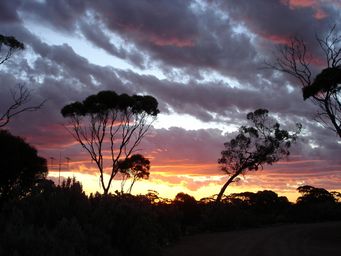
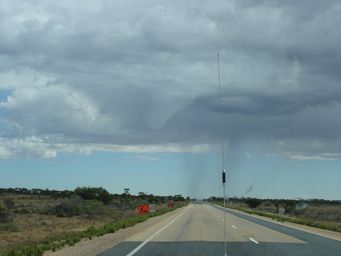
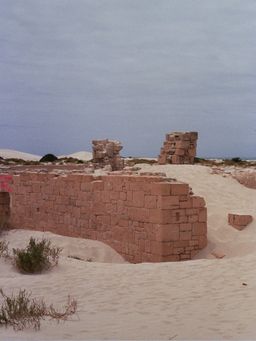
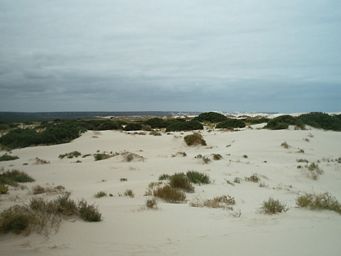
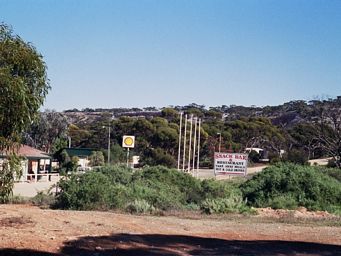
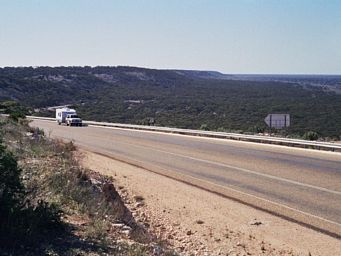
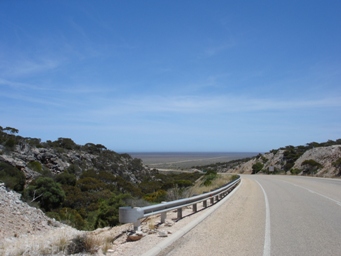
Reaching the Western Australian border at Border Village, after quarantine inspection, we return to our home state. Soon
we arrive a Eucla, where the road goes down onto the coastal plains. Visit the ruins of the old telegraph station which is being
covered by shifting sands.
The road follows the base of the cliffs between Eucla and Madura.
Madura Pass and Roadhouse
We travelled east on the Eyre Highway for the first time in 2004. My first knowledge of the Madura Pass, where the road descends from the plateau to Madura, was very early in the morning half light. It was raining and the mist was rising. With no idea the level of the road would change, suddenly the road in front of me and all to my right disappeared into an eerie misty abyss.
The Madura Pass in daylight from the large rest area at the top.
The cave itself has an entrance chamber over 300 metres long leads to a lake 180 metres long. The cave then consists of a single, straight tunnel more than six kilometres long, of which more than 90% is underwater. From the entrance lake the first sump is about one kilometre length to the air-filled Rockfall Chamber.
Dive gear must be transported over the Rockfall Chamber to the second
sump, which is 2.5 kilometres in length. The second sump leads to another chamber named Toad Hall. Dive gear must be carried across
Toad Hall to reach the third and final sump, which is 1.8 kilometres in length. Details from Nullarbor Roadhouse.
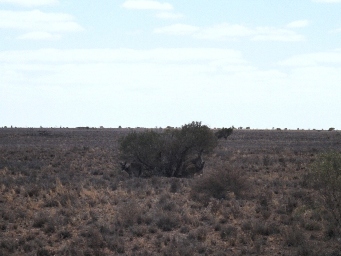
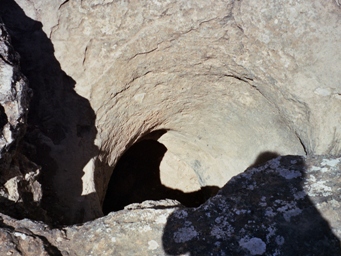
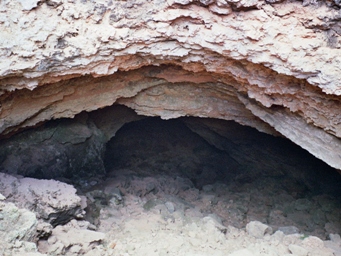
Ten kilometres west of Cocklebiddy, there is a very rough track from a small rest area leading to the Cocklebiddy Cave.
Many kangaroos sat in the shade of the sparse bushes; with no surface water, green leaves are the only moisture source from them in dry conditions.
Birds can be seen flying in and out of the cave, as it is the only source of water for them.
The Nullarbor is home to the world’s largest limestone karst. Hundreds of caves crowd the Nullarbor Karst, and one such cave has been deemed the Cocklebiddy Cave. The most popular of the hundreds of caves that can be found in this magnificent location, the entrance to this cave in particular was formed when the earth collapsed into a sinkhole revealing a massive labyrinth of underground caverns. It was quite a climb down to just to the cave entrance; something we were not prepared to do.
Since the 1960’s,
Cocklebiddy has been an object of much interest to Australian and international diving community. Many diving teams who have gone
exploring the caves and set numerous world records for distances of cave diving. They say there’s over six kilometres of underwater
passages ready to be explored in the cave.
See Question and Answer “We are planning to cross the Nullarbor east to west. Will I need to carry extra fuel? When is
the best time of year to avoid headwinds? What about safety?”
The Caiguna blowhole, just like Nullarbor caves, breathe more vigorously than all the other caves in Australia – in fact, air movement at cave entrance has been measured to be around 72 kilometres per hour. As you get closer to the blowhole, you can feel the earth breathing through the air currents, which, according to Aboriginal legends, were believed to be the breath of spirits. You will also see that the Caiguna blowhole is connected to a tiny cave that has roughly 1.5 metres clearance. These blowholes on the Nullarbor have been formed by both chemical and physical weathering processes through underground cavities. Details from Nullarbor Roadhouse.
Feel the Earth breath at the Caiguna Blowhole, close to the highway five kilometres west of Caiguna. When caves ‘breathe’, air
pressure falls and rises. The periodic reversal of air flow is caused by the pressure equalisation between the underground cavities
and the air pressure above the ground, while the speed of breathing is related to the volume of air contained in the cave as well
as the cross-sectional area of a cave’s entrance.
The lack of trees which gives the Nullarbor its name is not due to a dry climate, but to the very shallow soil on limestone. Trees, where present, are mostly stunted. We have met rain on the majority of our Nullarbor travels. We head into a shower of rain while on the “90 Mile Straight”, billed as Australia’s longest stretch of straight road (photo at left).
From Mundrabilla Roadhouse westwards, pastoral stations with fences commence. Mundrabilla usually has the cheapest fuel of the
Nullarbor Roadhouses.
Balladonia Station homestead can be seen 26 kilometres south east of Balladonia Roadhouse. The homestead was build alongside
a large low granite outcrop, with the site most likely chosen for the water collection benefits of the rock.
To the south
east Balladonia Roadhouse, an unmaintained road goes south with options to Mount Ragged and Cape Arid or to Condingup. We travelled
this road in 2005.
Balladonia Roadhouse has a display of memorabilia from when pieces of the disintegrating space station Skylab landed in the region in 1979.
Newman Rocks are fifty kilometres west of Balladonia where a track goes to a large area of flat
rocks. With no facilities, this is still a quiet and pleasant place to stop overnight. See Newman Rocks camping here.
The terrain becomes hillier, rising to cross a range before Norseman. Norseman is the headquarters of the large Shire
of Dundas which stretches all the way to the South Australian border.
Reaching the Coolgardie-Esperance Highway signals
the end of the Eyre Highway.
We experienced a colourful sunset when stopping for the night at the Woorlba 24 hour Rest Area, fifty kilometres east of
Balladonia. This is not an ideal rest area for a quiet night, because it is not possible to get far back from the road.
Photo at right.